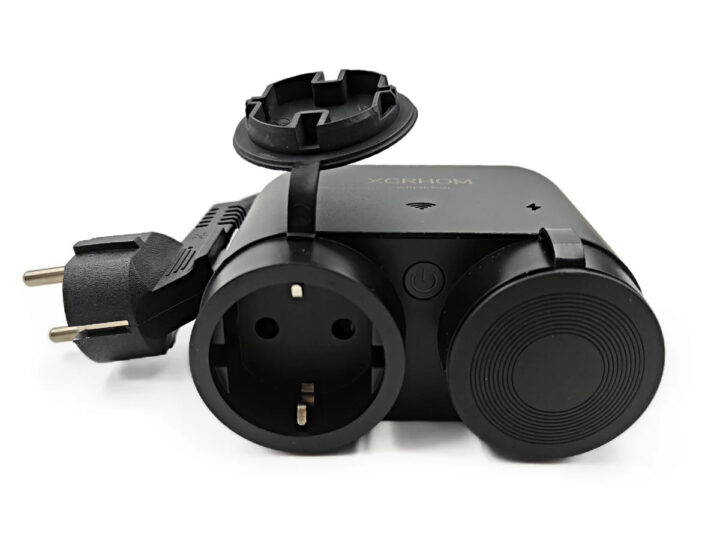ESPHome is the favorite open-source firmware of Smart Home devices, but Tasmota is another option that’s been available for many years. We’ve just seen fewer products based on Tasmota (previously Sonoff-Tasmota) in recent years, but it recently showed up on a credit card-sized quad relay board, and I’ve just come across Maker Go’s Xcrhom T4S WiFi Outdoor Smart Socket that also ships with Tasmota firmware and sells on AliExpress for $24.88 shipped.
The Xcrhom T4S exposes two sockets with dust and rainproof covers to be used safely outdoors, integrates a power meter, and the Tasmota firmware enables MQTT support, Home Assistant compatibility, and support for Amazon Alexa and Google Assistant.
Xcrhom T4S specifications:
- Two EU sockets
- Max load – 3680W in total (16A x 230V)
- Rated Current – Up to 16A in total
- Power Input – 100 to 240V AC 50Hz
- Wireless – 2.4 GHz 802.11b/g/n WiFi 4; Tx power up to 19 dBm
- Features – Power meter, MQTT, support for Amazon Alexa and Google Assistant
- Misc – Power On/Off buttons
- Dimensions – 110 x 52 x 242mm (with cable)
- Temperature Range – 0°C – 40°C
- Humidity – 10% to 90%
- IP Rating – IP44
 Sadly, I could not find much in the way of documentation, the QR code is in the image above is not decoded properly in Google Lens, and going to xcrhom.tech reveals a Tasmota product page with the T4S and cheap Tasmota light bulbs based on ESP8266. That means the best we have right now is the official Tasmota documentation, but it’s generic and not specific to that device.
Sadly, I could not find much in the way of documentation, the QR code is in the image above is not decoded properly in Google Lens, and going to xcrhom.tech reveals a Tasmota product page with the T4S and cheap Tasmota light bulbs based on ESP8266. That means the best we have right now is the official Tasmota documentation, but it’s generic and not specific to that device.
It would be much more convenient if it was a power extension with a cable of a few meters. The main benefit I initially saw from this model is that the covers may prevent insects from making nests inside the sockets, which happens frequently where I live. But I also noticed an almost identical Tasmota outdoor socket listed on Blackadder called Maxcio EOP03-EU, and if the outlets face down, I can see them being protected from the rain as shown in the image below.

Jean-Luc started CNX Software in 2010 as a part-time endeavor, before quitting his job as a software engineering manager, and starting to write daily news, and reviews full time later in 2011.
Support CNX Software! Donate via cryptocurrencies, become a Patron on Patreon, or purchase goods on Amazon or Aliexpress






